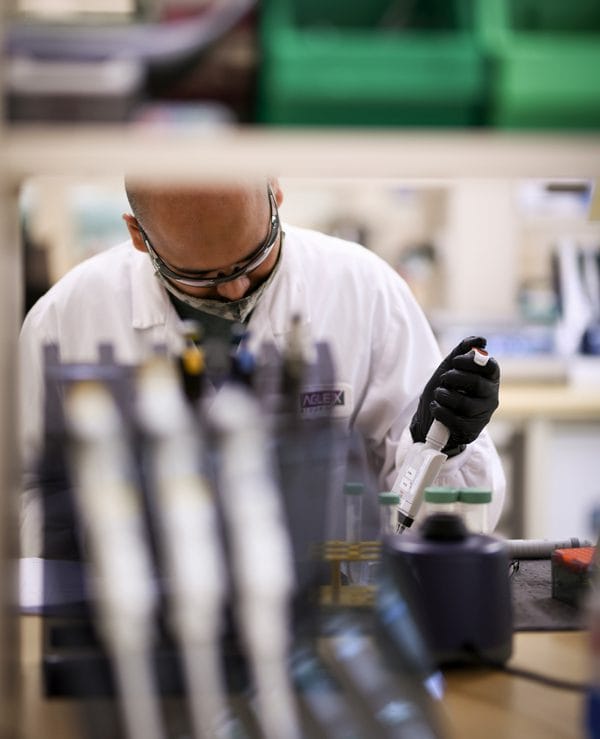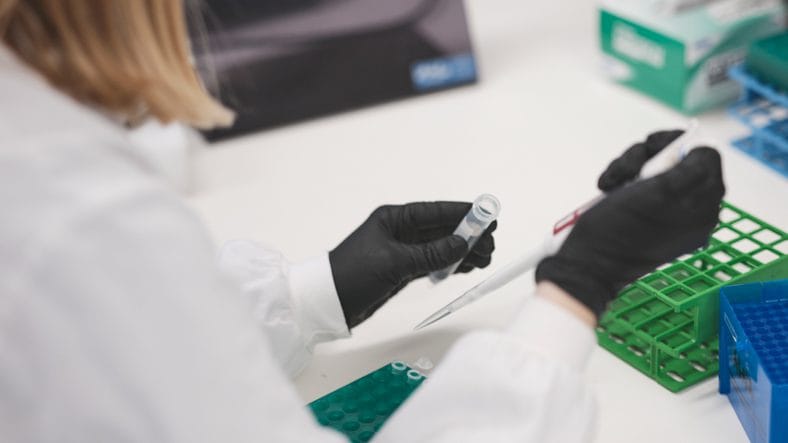Client: Europe based Biotech company
Therapeutic area: Inflammatory Diseases
Objective: Development of an anti-drug antibody assay for a monovalent therapeutic to TNF-R1
Project Background
Immunogenicity assessment of biotherapeutics is a regulatory requirement and key parameter for assessing the safety and efficacy of a drug candidate. Assays for immunogenicity that measure anti-drug antibodies (ADA) typically rely on an assay cut point to ensure accurate sample scoring (positive/negative). However, a unique challenge presented to Agilex Biolabs’ R&D team when a biotechnology company approached us to develop one such assay for their novel and highly engineered monoclonal antibody (mAb) construct.
The Challenge
- Innovative mAb construct with one binding domain instead of two.
- A substantial portion of drug naïve sera samples showed strong reactivity in the assay during method development stage.
- Highly variable data set for calculation of the assay cut point.
- Inaccurate threshold against which to score the samples
- Hypothesised that reactivity observed being driven by pre-existing ADAs
The Solution
In close collaboration with the sponsor, it was agreed that the elevated level of engineering within the drug product could be a driver for pre-existing ADA. A literature review (Holland, M., et al. 2013), confirmed this further that other highly engineered constructs for the same target had severe safety and efficacy issues driven by pre-existing ADA. Hence Agilex team decided to first address the scientific issue by:
- Depleting a subset of highly reactive sera of its immunoglobulins
- Following depletion, the samples were reanalysed in the assay and the reactivity was compared.
- The reactivity was removed from the assay, and it was confirmed the reactivity was driven by IgG and IgM antibodies.

Next was to over the analytical issue, which resolved by:
- Screening a large panel of sera individuals to determine how much of a population showed the reactivity.
- The team was optimistic that when of the one hundred samples assessed, approximately 60% showed reactivity. This meant that we had around forty samples for every hundred that would be suitable for cut-point calculation.
- Therefore, in discussion with the sponsor, it was agreed they would again screen samples, this time three hundred, to determine a non-reactive population that could be used for the setting of the cut-point.
- This was conducted successfully and accurate scoring of samples throughout all tiers of the ADA assay could be performed.
References
Holland, M.C., Wurthner, J.U., Morley, P.J., Birchler, M.A., Lambert, J., Albayaty, M., Serone, A.P., Wilson, R., Chen, Y., Forrest, R.M., Cordy, J.C., Lipson, D.A. and Bayliffe, A.I. (2013). Autoantibodies to Variable Heavy (VH) Chain Ig Sequences in Humans Impact the Safety and Clinical Pharmacology of a VH Domain Antibody Antagonist of TNF-α Receptor 1. Journal of Clinical Immunology, 33(7), pp.1192–1203.)
Definitions
- Immunogenicity: The ability of an antigen (e.g., dosed drug) to elicit an immune response. For a biotherapeutic, this is known as an anti-drug-antibody (ADA).
- Cut-Point: A statistically derived cut off to define the positive or negative status of a sample typically with a 5%, 1%, or 0.1% false positive rate, dependent on the tier of testing.


